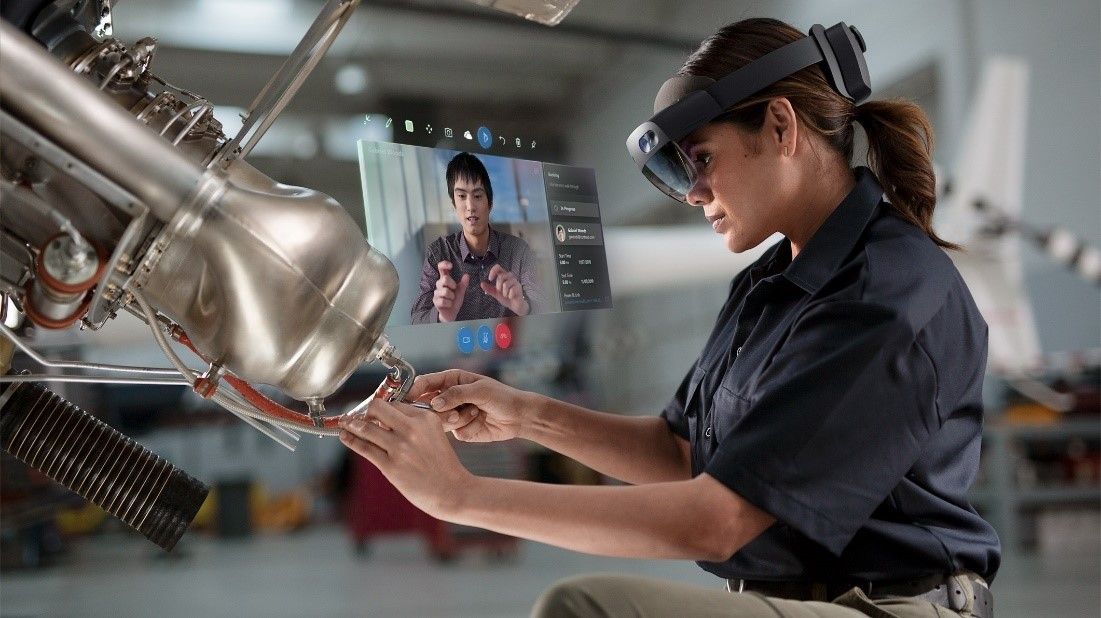The remote assistance use case is one of the most widely deployed use cases for augmented reality head-mounted displays.
The concept is for when a capable technician on the field faces a problem with a piece of machinery or technical problem they are not familiar with. The field technician would then call, through a remote assistance solution, an expert on the subject or technology. This is used in factories with complex machines such as airplanes and engine repairs.
Remote assistance is today the most widely deployed augmented reality use case with hardware and software solutions ready to deploy for enterprises and businesses. This use case can work with most AR headsets from monocular devices up to see-through stereo glasses.
The key software vendors are Microsoft (with Remote Assist), Scope AR , Atheer, Re-flect, and Ubimax. More vendors such as Mira Labs, Third Eye, and Vuzix are also coming to the market with hardware + software remote assistance products.
Let's take the example of a field service technician for an elevator company. Elevators have a short SLA and they need to be repaired quickly. There are few field technicians that are top experts on that specific elevator, and it's not viable to fly them all over the world due to the cost and time it takes.
The solution is to use more local technicians who have good knowledge of the elevator but will fix the issue with the remote assistance of an expert.
So, when an elevator fails, a local field technician can go on site and put on an AR headset to be able to work handsfree on the repair. The AR headset connects remotely to an expert, like a video conference app, where the expert will see what the local field technician sees and the field technician will be able to see the expert projected on a virtual video in his field of view.
The expert will be able to show documents to the technician as well as point to him physical elements by drawing on what the technician is looking at and adding arrows.
In this review we do a deep dive in Microsoft Remote Assist which is part of the Microsoft Dynamic 365 software suite.
Video Review
The video is a virtual reality video and is best viewed on an VR headset, plug in your favorite head set and head to YouTube or vr.afternow.io using Firefox Reality VR browser.
Summary
Pros:
- Remote Assist is well designed and easy to use.
- Using the Hololens capabilities it enables the placement of instructions or directions in the field technician’s physical world.
Cons:
- When using it outside we ended up having a few issues related to light and connection but that is linked more to the Hololens hardware limitations, but it still limited our use case.
- Remote Assist is in a close ecosystem with Microsoft product suite. It requires a Microsoft Dynanic 365 licenses as well as Microsoft Office license for Teams.
Microsoft Remote Assist is available today and has a great update in May and we can expect a new update with the release of the Hololens 2.
Price: after a 30 day trial its $65 / month / user

